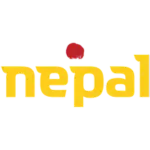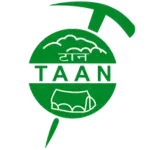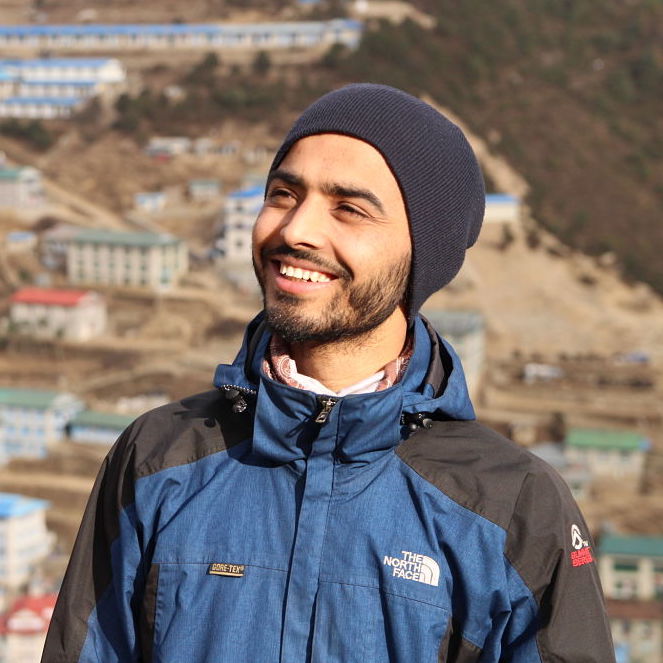Frequently Asked Questions
and answers
About Travel Documents & Insurance
As a foreigner, you probably need a tourist visa to enter Nepal. You can apply for this either on arrival or pre-arrival, online or at a Nepal Embassy or Consulate.
Please note:
Visa on arrival
During travel high season in spring and autumn, you can expect some queues
Carry enough cash, in case the computer is down
Visa pre-arrival
You must enter Nepal within 6 months from the visa issued date
Your total stay is counted starting from the day you enter into Nepal
Requirements for your passport:
Your passport must be valid for at least 6 months upon departure from Nepal
Your passport must have at least 2 empty visa pages that are opposite each other
Find Nepals nearest embassy, on this webpage of the Nepal Ministry of Foreign Affairs.
If you join one of our trips, good travel health insurance is a must. However, you don’t need to show a specific insurance to enter Nepal.
Your insurance must cover potential expenses for emergency rescue by helicopter as well as treatment costs. Having a good travel health insurance protects both yourself and us against comprehensive expenses that may arise due to medical issues or accidents.
Note: Some travel insurance policies only provide coverage up to a certain altitude. Therefore, check this with the maximum altitude of your trek in mind.
Allow yourself to have a relaxed trip and obtain good travel insurance. If you happen to get sick or injured, the costs of emergency treatment and evacuation can be shocking. Ensure that the insurance you buy makes special exceptions for adventure travel, and confirm that the company is aware of your adventure itinerary, especially if you are going on a trekking or climbing trip in the Himalayas.
Note: By Mountain People does not arrange or sell insurance. However, we request that you provide us with a copy of your insurance policy before you join one of our trips.
About Clothes & Equipment
Nepal has a wide range of climates, therefore it is good if you bring both light and warm clothing in casual and comfortable styles.
In the mountain areas, warm woolen clothing is necessary while at lower altitude cotton clothing is ideal. Bring any stuff and you will always be wearing to your comfort.
Next to the practical and comfortable aspect of clothing, try to keep the local culture in mind. Dress modestly, which means wearing clothes that cover the shoulders and thighs. Take your cue from the locals to gauge what’s acceptable in the area.
If you miss any of your clothes, don’t worry. You can buy Nepalese garments all over the country. Clothes and equipment for treks, you can buy in Thamel Kathmandu and Lakeside Pokhara. If you like, we can recommend you a shop and let your guide take you there.
For trekking you will need sturdy walking shoes or boots. This is the most important thing, since your feet will be your main form of transportation. 🙂
Furthermore, you will do yourself a favor if your clothes are comfortable and dry quickly. For a complete packing list, feel free to request our packing list.
If this is going to be your first trek or if you need many new items, do consider buying or renting clothings and gear in Nepal. It is very affordable and there are plenty of outdoor gear shops that sell anything you might need. If you like, we can recommend you a shop and let your guide take you there.
About Trekking
Yes, we do! We are more than happy to arrange any kind of personal tour or trek for you and your fellow traveler(s).
Just send us a request and we will build the perfect travel itinerary for you!
Together, we can build the itinerary with a combination of activities that you want to do, the sites you want to see and the things you want to experience, as well as your budget and time constraints.
Absolutely! in fact it is a great place to start. 🙂
As part of our job, one of the most important things we do is ascertain your experience and ambitions, and build the trek that matches these the best.
However hard or easy you’d like it, however much or little experience you have, we have the perfect trek for you.
The Difficulty levels show the difficulty of the treks on our website. According to the standards and experience of By Mountain People, we have divided the treks into 5 levels. The levels range from 1 to 5, covering light and moderate treks to challenging treks.
Treks rated with 1 could be suitable for all while level 5 treks are for those who have certain experience and capability.
Note: Keep in mind that this is a general guide only. A variety of factors, including weather, may add to the challenge.
Level 1 treks
No previous trekking experience and any physical preparation are required to attempt this trek. An interest in walking will be enough to take up such treks. Such treks usually vary from a 2 days hike to a 5 days trekking and can reach up to an altitude of 3,000 m. These treks are usually on well-maintained trails and pass through ridges and involve walking up to 5 hours a day.
Level 2 treks
Moderate treks will require at least 6-7 hours of walking every day, crossing 4,000 m above high altitude passes, and long and exhausting walks through often rough trails, rocks and boulders. Therefore, you will require physical and mental fitness, positive attitude and interests and previous hiking or camping experience is preferred. You should prepare to face high altitude.
Level 3 treks
…
Level 4 treks
Previous trekking experience and technical knowledge is essential in Difficult Treks. Besides walking through rough trails for 6-7 hours and crossing high passes as high as 5000m, you will also be glacier crossings on snow and ice. You will be facing high altitude air with low level of oxygen and continuous walking over huge stretch of Himalayan valleys. Positive attitude and perseverance is required.
Level 5 treks
These treks involve long days, long hours of challenging walks, high altitude passes above 5,000 m, difficult terrains and glacier and snow walking. No doubt you need to be mentally and physically fit and in excellent health condition. As part of technical requirements, you will require to have rock and ice climbing experience with the knowledge of use of ice axe and crampons. You should consider joining one of the rock climbing and glacier walking classes prior to heading for these treks.
Yes, BMP guides speak English. However, keep in mind this is not our first language. So the pronunciation, grammar and use of words may be different.
This is well outweighed by the fact that they can tell you so much about the fascinating cultures and nature of the area, from the local perspective!
We focus on small group sizes, especially when operating in the hills and villages for cultural and environmental reasons. However, this is your adventure and we are open to custom make trips to suit your group.
About BMP
Yes, we’ll pick you up from the airport. If you have booked one of our packages, it is included.
Just provide us with your flight details. And we will be there to pick you up and bring you to your hotel.
Of course! We can arrange the following in Nepal for you:
- All your domestic flights
- Airport transfer
- Bus tickets (for both local and tourist buses)
- Jeeps or private drive
- Trekking permits
- Guides
- Trekking guide
- Jungle safari guide
- Bird watching guide
- Porters and sherpas
- Mountain lodges
- City hotels
- Jungle lodges and resorts
Please note: we do not arrange your international flight to and from Nepal.
About Health
Malaria occurs in Nepal, and it is a disease that still claims lives, including travelers.
Malaria advice in Nepal depends heavily on various personal and travel-related factors. Therefore, it is recommended to seek personal advice at your nearest travel clinic.
You will probably be advised to avoid mosquito bites to prevent malaria. For instance, by wearing long sleeves and pants and using mosquito spray with DEET. You may be adviced to take prescription medicine before, during, and after your trip as well.
Yes, to travel safe and return home healthy it is wise to get yourself vaccinated. Contact your local travel health clinic and ask for their personal advice to maintain your health during your travel in Nepal.
Routine vaccines
Your travel health clinic will make sure that you are up-to-date on routine vaccines. These vaccines probably include measles-mumps-rubella (MMR) vaccine, diphtheria-tetanus-pertussis vaccine, varicella (chickenpox) vaccine, and polio vaccine.
Vaccines before traveling to Nepal
Clinics recommend most travellers to get a vaccine for hepatitis A and typhoid. Because you can get hepatitis A through contaminated food or water in Nepal, regardless of where you are eating or staying. And you can get typhoid through contaminated food or water. Especially if you are staying with friends or relatives, visiting smaller cities or rural areas, or if you are an adventurous eater.
Other vaccines your doctor might advice, are hepatitis B, Japanese encephalitis, rabies and yellow fever.
Before coming to Nepal you are advised to take vaccines or carry medicines for common diseases.
When you are in Nepal, make sure you only eat thoroughly cooked food. Also avoid fast food and salads. Drink only bottled water or water from recognized drinking water stations, and soft drinks like Pepsi and Sprite are also fine to drink.
If you are planning to travel during the monsoon season (June to September) you may get caught by cholera. But if you follow our advice and not drink contaminated water like tap water and avoid uncooked food, you reduce the risk to a minimum.
When you walk down dusty and polluted streets, you better wear a dust mask. Especially during the dry season it can be tough to walk in the streets. You can buy dust masks at one of the many medical shops.
Along the popular trekking trails, there are safe ‘drinking water stations’ where you can refill your bottle. Considering the price and environment, this is the cheapest and most conscious option. You can also get boiled water or sealed water bottles from the lodges.
Along side trails or remote regions is less or no safe drinking water. Then, you better bring tablets or drops to purify water.
AMS stands for Acute Mountain Sickness, an altitude sickness.
Every year, people die of altitude sickness. All of these deaths are preventable. If you are travelling above 2,500 m, read about AMS and tell your companions about it – it could save your life.
Altitude sickness has 3 forms:
- Mild altitude sickness
- HAPE
- HACE
Mild altitude sickness is called acute mountain sickness (AMS) and is quite similar to a hangover – it causes headache, nausea, and fatigue. This is very common: some people are only slightly affected, others feel awful.
If you have AMS, you should take this as a warning sign that you are at risk of the serious forms of altitude sickness: HAPE and HACE. Both HAPE and HACE can be fatal within hours.
Go for more information about AMS to Altitude.org.
First of all, if you think you have altitude sickness:
- Descend immediately, it is absolutely essential
- Take medicines: both dexamethasone and acetazolamide, if available
- Use pressure bags and oxygen gas, it can buy time
Two things are certain to make altitude sickness very likely:
- Ascending faster than 500 m per day
- Exercising vigourously
Physically fit individuals are not protected – even Olympic athletes get altitude sickness. Altitude sickness happens because there is less oxygen in the air that you breathe at high altitudes.
To prevent altitude sickness, you should go up slowly. Take it easy, and give your body time to get used to the altitude. Your body has an amazing ability to acclimatise to altitude, but it needs time. For instance, it takes about a week to adapt to an altitude of 5,000 m.
Yes, there are special clinics for travellers in Nepal.
The Ciwec Hospital meets the need for a Western standard clinic. They provide many services. For instance emergency services (24h), but also immunization and dental services.
There is a Ciwec Hospital in Kathmandu and Pokhara.
Go for more information about the Ciwec Hospital to Ciwec-Clinic.com.
There are also many drug stores where you can buy medicines. The ones near the hospital region are open 24 hours.
About Nepal
There are two ways to enter Nepal:
- By air
- By road
Enter Nepal by air
Nepal has one international airport, called Tribhuvan International Airport (TIA). It is located in Kathmandu. Since 2017, Nepal is constructing a second international airport in Pokhara. This project is planned to be completed in the summer of 2020.
Some of the airlines that fly to Nepal are:
- Royal Nepal Airlines
- China Southern
- Etihad
- FlyDubai
- Gulf Air
- Himalaya Airlines
- Air India
- Jet Airways
- Malaysia Airlines
- Oman Air
- Qatar Airways
- Turkish Airlines
Enter Nepal by road
There are several entry points to enter Nepal overland. These are from the Indian, Chinese and Tibetan border. The entry points are at:
- Kodari
- Kakarvita
- Birgunj
- Bhairahawa
- Nepalganj
- Dhangadhi
- Mahendranagar
The best time to travel to Nepal depends on what you are planning to do.
For trekking in the mountains, the best months are April, May, October and November.
The summers of Nepal have monsoon, which makes the roads muddy and transportation more difficult. The winters are dry and sunny, and the nights cold. But as soon as the sun shines, the temperature rises quickly.
The weather in the mountains is notoriously difficult to predict.
In general, the winters (January and February) can be a bit cold at night and the days can be quite beautiful and warm when the sun comes out. Even though there’s snow.
The summers (June, July and August) are more wet, warm and humid due to the monsoon showers. The roads can be tricky and there might be landslides.
Spring and autumn are the best seasons to explore Nepal. Mostly, it is not too hot and not too cold, there’s not (too much) snow and occasionally rain.
Still, it is important to make sure that you are prepared to any weather condition. Bring clothes that keep you warm and dry in just about any conditions. Expect the unexpected.
Average Temperatures in Nepal (in Degree Celsius )
| Height | Sep | Oct | Nov | Dec | Jan | Feb | Mar | Apr | May |
| Kathmandu | 16/28 | 14/26 | 7/22 | 1/20 | 1/18 | 4/20 | 7/25 | 12/28 | 16/30 |
| 1,000 m | 20/28 | 16/25 | 11/22 | 6/20 | 5/19 | 8/20 | 11/25 | 15/29 | 17/30 |
| 2,000 m | 13/22 | 10/21 | 4/17 | 1/14 | 0/13 | 1/14 | 4/18 | 8/22 | 12/23 |
| 3,000 m | 11/19 | 6/18 | 1/15 | -2/13 | -3/12 | -1/13 | 2/16 | 5/19 | 8/20 |
| 4,000 m | 1/13 | -3/12 | -8/8 | -10/6 | -12/4 | -10/5 | -6/9 | -3/12 | -1/13 |
| 5,000 m | -1/10 | -6/8 | -11/6 | -13/4 | -18/3 | -14/5 | -8/7 | -4/11 | -2/12 |
Yes, Kathmandu and Pokhara have many ATM’s. Other cities, like Butwal and Dharan, also have ATM’s.
Most international cards are accepted in Nepal. Such as the Visa, Mastercard and American Express. Both debit and credit cards are accepted here.
Many countries use different voltages or plugs. For example, the US uses 120 volt. Nepal uses other voltages, 220-240 volts to power their appliances, as well different plugs. If you try to plug an American appliance such as a shaver or hairdryer into an outlet of a different voltage, you may destroy the appliance and cause yourself injury. Check the plug and check the voltage of your country and appliances, you might need a travel plug.
Also, you may experience blackouts during your time in Nepal. These are much less than before, but still common in certain areas. So, do consider to bring a head light.
About Safety
Yes, Nepal is safe for female solo travellers. However, women should still be cautious. Some Nepali men have peculiar ideas about the morality of Western women, given to Western movies portraying women wearing ‘immodest’ clothing.
Dress modestly, which means wearing clothes that cover the shoulders and thighs. Take your cue from the locals to gauge what’s acceptable in the area.
Sexual harassment is low-key but does exist. The best advice is to never trek alone. If you are women who want to go trekking but not with men, we are happy that we can provide you with female trekking staff too.
Nepal is one of the new democratic countries in the world with many active political parties, ideas, ideologies and leaders. As such there might be some disturbances in some parts of the country. But it does not and will not affect the daily life of the residents in the other parts. Life moves on as usual, unperturbed.
Yes, there is a tourist police in Nepal. There are several tourist police stations in the Kathmandu Valley. But also in Lukla, the airstrip in the Everest Region, in a few villages in the Annapurna region, in Lumbini near the Indian border.
The emergency number is: 1144
For all locations and more information about the tourist police, please visit cid.nepalpolice.gov.np.







